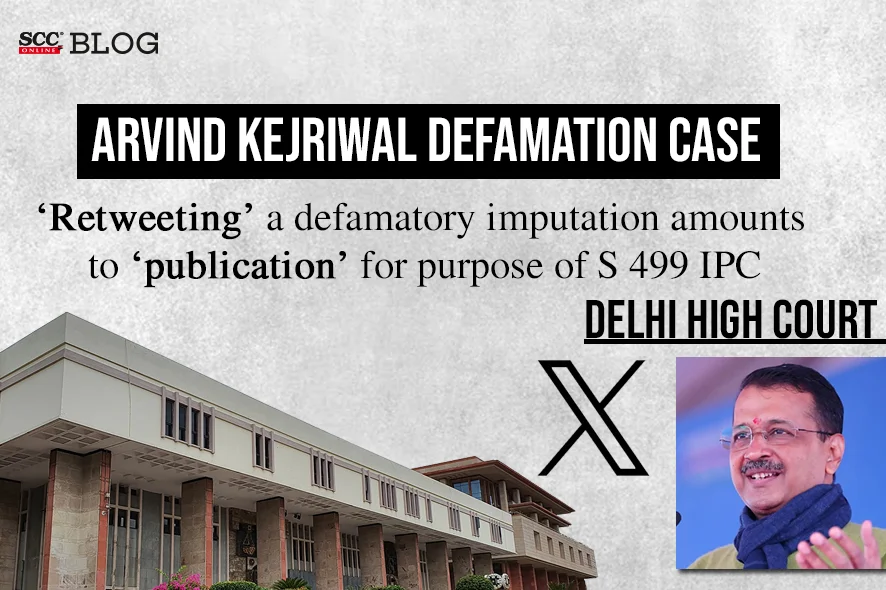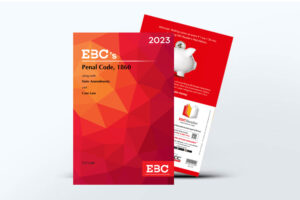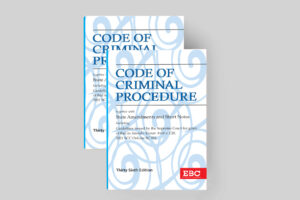Delhi High Court: A petition was filed by Arvind Kejriwal, challenging the defamation case filed against him by Vikas Sankrityan alias Vikas Pandey for retweeting a video, posted by Dhruv Rathee where allegations were made regarding Bharatiya Janata Party (BJP) IT cell. Swarana Kanta Sharma, J., upheld the summon orders, refused to quash the defamation case observing that retweeting defamatory content amounts to defamation as retweeting a content, which is allegedly defamatory, on the Twitter account and projecting it to be as if his own views, will prima facie attract the liability under Section 499 of IPC, for the purpose of issuance of summons. The Court held that
“The rigours of Section 499 of IPC will be attracted prima facie in case a person will retweet/repost the alleged defamatory remarks or content, for the general public to see, appreciate and believe.”
Background
On 06-05-2018, Dhruv Rathee uploaded a video on YouTube making certain allegations against Vikas Sankritayan. On 07-05-2018, he tweeted an allegation that the BJP IT Cell attempted to bribe someone to defame him, referring to the URL of the first alleged defamatory publication. On the same day, Arvind Kejriwal retweeted this allegation. Vikas Sankritayan filed a complaint against Arvind Kejriwal for allegedly committing offenses under Sections 499 and 500 of Penal Code, 1860 (IPC). He alleged that Dhruv Rathee made defamatory statements against him in a YouTube video and shared the URL on Twitter Arvind Kejriwal is accused of retweeting this allegedly defamatory content without verifying its authenticity, thus spreading it to a large audience. The complaint includes evidence such as the YouTube video titled “BJP IT Cell Part-2” circulated by Dhruv Rathee, as well as the URL shared on Twitter. Vikas Sankritayan alleged that the retweet by Arvind Kejriwal exposed the defamatory content to a large audience, both nationally and internationally. He also mentioned receiving calls from two friends expressing dismay over the allegations made against him.
Vikas Sankritayan (respondent 2) was examined under Section 200 of Criminal Procedure Code (CrPC) at the pre-summoning stage, as he filed a complaint under Section 499 and 500 of IPC based on the allegations mentioned earlier. Arvind Kejriwal (petitioner) was summoned as an accused by the Additional Chief Metropolitan Magistrate-I, Rouse Avenue Courts, New Delhi, via an order of summoning dated 17-07-2019. Arvind Kejriwal, who was aggrieved by the issuance of summons and the complaint filed by respondent 2, filed a revision petition before the Sessions Court seeking relief. However, this revision petition was dismissed by the Additional Sessions Judge/Special Judge (PC Act) CBI-09, Rouse Avenue Courts, New Delhi, via an order dated 30-10-2019. Dissatisfied with the orders passed by both the Trial Court and the Sessions Court, Arvind Kejriwal has approached the High Court through the present petition under Section 482 of CrPC seeking setting aside of the order dated 17-07-2019 passed by the Trial Court and the order dated 30-10-2019 passed in Criminal Revision by the Sessions Court.
The Court noted that they play an important role in ensuring equal protection to every individual, regardless of their standing in society. The law on defamation on the one hand protects one person’s reputation who is the complainant and one person’s fundamental right, who has been alleged to be an accused to freedom of expression. In addressing a democratic community, it is crucial to emphasize that freedom of speech, while a fundamental right, does not grant individuals the license to inflict harm or tarnish the reputation of others. This distinction becomes particularly pertinent when grappling with the court’s dilemma of striking a balance between the cherished value of free expression and the equally essential need to protect an individual’s reputation. In rendering equal protection, the court must balance the right of free speech with the need to prevent unjust harm to reputation. The injurious falsehood of a statement will invite defamation and loss of reputation.
The Court remarked that “whether a person has achieved great heights in society or finds himself marginalised considering himself as the last and least in terms of access to Court of law to fight for safeguarding his reputation, their right to fair treatment and protection from unwarranted harm remains paramount before any Court of law while adjudicating. This approach and duty become more critical when the complainant may be pitted against a person who may have more power, influence and followers.”
The Court remarked that the use of cyberspace, as in the present case, the social media platform of Twitter (now ‘X’), has seen rapid development. The content shared on such platforms spreads rapidly, and any content involving the reputation of a person will attract considerable harm in case he is negatively portrayed based on content that is scandalous or indictable. Twitter (now ‘X’), as a platform, serves as a megaphone that amplifies messages and broadcasts them to an extensive audience. It provides the ability to communicate with millions of people at the stroke of a button. The immediacy and accessibility of social media means that defamatory statements disseminated through tweets can rapidly reach individuals worldwide. The audience includes not only followers of the public figure but also anyone who has access to the social media platform and who may come across or be exposed to the tweet. Words which are posted, which may be these days in the form of a video also, will amount to publication and will be actionable in case it contains defamatory content or malice.
The Court observed that the concept of publication, traditionally associated with printed materials, must be re-examined in the context of virtual platforms where information can reach a vast audience in seconds. Moreover, the legal system should be attuned to the dynamics of social media influence. In the digital age, the boundaries of ‘publication’ have expanded, and the implications of defamation are heightened due to the potential of widespread dissemination. 54. The force of causing injury to reputation in virtual realms can be particularly potent, with the impact transcending physical boundaries and reaching a global audience. Unlike physical injury, which may be localized and limited in scope, virtual injury can have far-reaching and long-lasting effects. The force of a virtual blow is intricately tied to the dynamics of online engagement, where the virality and permanence of digital content contribute to the enduring nature of reputational harm.
The Court concluded that retweeting or reposting defamatory content, without any disclaimer as to whether the person so retweeting agrees or disagrees or has verified the content so posted or not, and as to whether he projected to the world at large, who care to follow him, that he believes the content to be true so shared, a person would be republishing the original defamatory content which has the potential of lowering the moral or intellectual character or credit of a person. Thus, the background of the petitioner, being a Chief Minister, necessitates an acknowledgment of the inherent sense of responsibility that comes with such a significant political role. When a public figure, particularly one with a political standing, tweets or retweets a defamatory post, the stakes and repercussions escalate given the broader implications on society. The audience, therefore, becomes the citizenry at large, whose opinions and decisions may be influenced by the information they consume, including defamatory statements published on social media.
[Arvind Kejriwal v State, 2024 SCC OnLine Del 719, decided on 05-02-2024]
Advocates who appeared in this case :
Mr. Manish Vashishth, Senior Advocate with Mr. Karan Sharma, Mr. Rishabh Sharma, Mr. Vedanth Vashishth, Mohd. Irshad & Ms. Harshita Nathrani, Advocates for petitioner
Mr. Manoj Pant, APP for the State. Mr. Raghav Awasthi, Mr. Kunal Tiwari and Mukesh Sharma, Advocates for respondent No.2.
Image Source: https://www.instagram.com/arvindkejriwal/?hl=en









